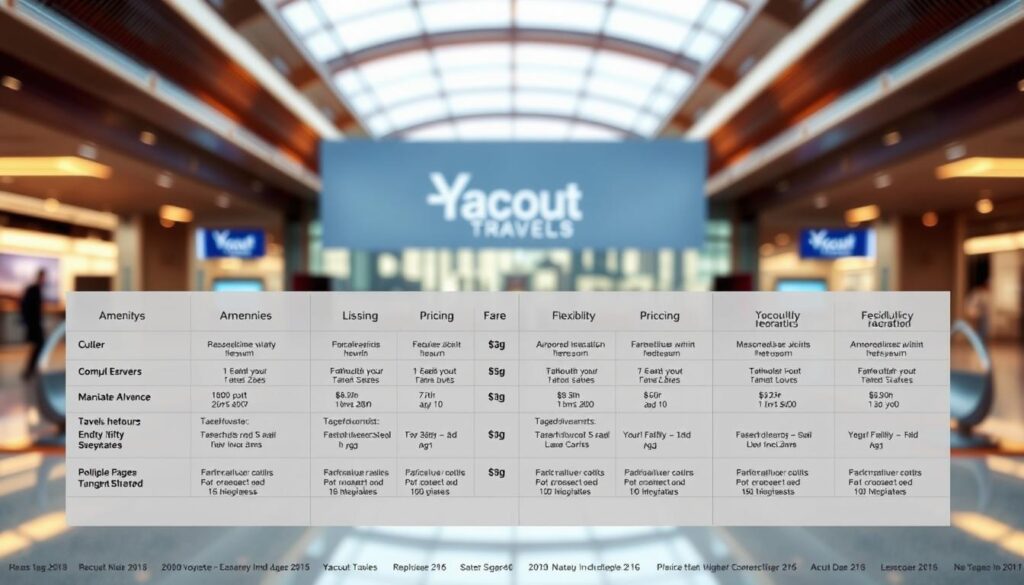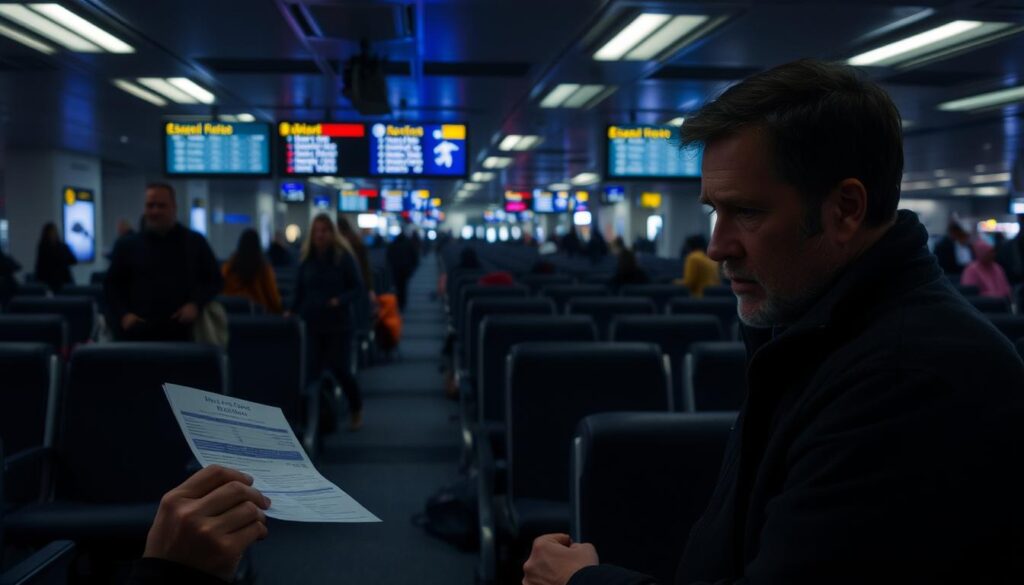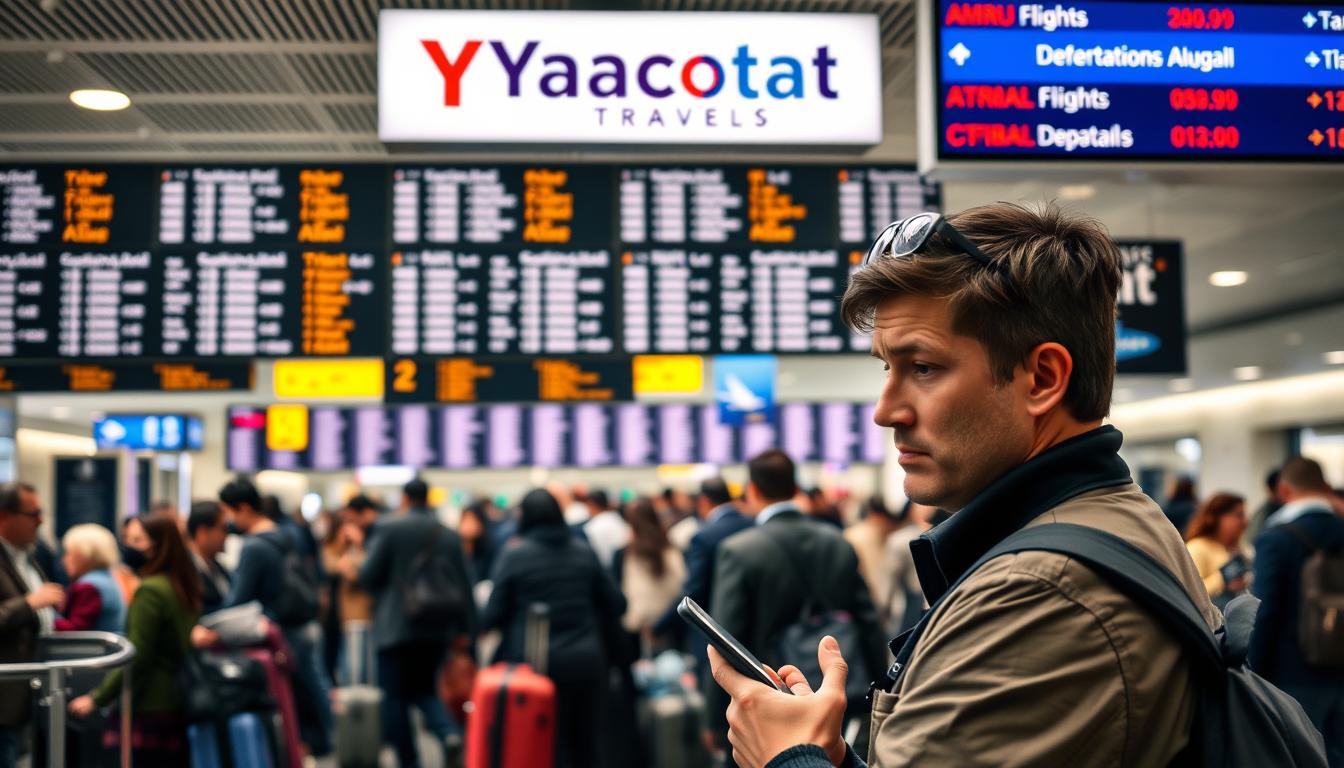The Flight Booking Mistake Everyone Makes
Did you know that the average traveler overpays for airfare by hundreds of dollars on every trip? That money could have funded amazing experiences at your destination. Most people don’t realize they are leaving significant savings on the table.
According to travel experts, the root cause isn’t bad luck. The biggest error is a simple lack of strategy. People often just enter their dates and click “buy,” missing out on smarter options.
This approach costs you real cash. Your vacation budget takes a hit before you even pack your bags. Airfare is typically the most expensive part of any journey, so small missteps have a big impact.
This guide will change that. We will walk you through the common pitfalls that drain your wallet. You will learn the insider strategies that professional travel advisers use to find the best deals.
By the end, you’ll have a complete checklist to become a savvier traveler. You will keep more money in your pocket for the fun parts of your adventure.
Understanding the Landscape of Flight Booking
Behind every airfare quote lies a complex system of algorithms and market forces at work. Understanding this landscape helps you make smarter choices for your next trip.
The Role of Dynamic Pricing and Demand
Airlines now use sophisticated algorithms that adjust fares in real-time. These systems monitor booking patterns, competitor rates, and seat availability constantly.
When you search for travel options, the prices reflect current demand. Even the number of people looking at similar routes affects what you see. This means fares can change between searches.
Seasonal Trends and Travel Peak Times
Seasonal patterns heavily influence ticket costs. Holidays and summer months typically see higher demand. This drives up prices significantly.
According to recent data, Thursday is often the cheapest day to travel. Sunday tends to be the most expensive. Choosing your departure dates wisely can save you money.
| Travel Factor | Price Impact | Best Strategy |
|---|---|---|
| Day of Week | High | Fly on Thursday instead of Sunday |
| Season | Very High | Book during shoulder seasons |
| Time of Day | Medium | Choose early morning departures |
| Advance Booking | Medium-High | Book 2-3 months ahead for best rates |
Understanding these patterns gives you significant advantages when planning your travel. You can anticipate when fares might be most favorable.
Avoiding Flight Booking Mistakes
Many people unknowingly commit simple oversights during the reservation process that lead to unnecessary complications. These common slip-ups can turn a smooth journey into a stressful experience.
How to Spot and Prevent Common Errors
One of the most frequent issues involves personal details. Travel expert Gunnar Olson learned this the hard way when autofill created a duplicate last name on his ticket.
Always double-check every field before confirming your purchase. International carriers often use Day/Month/Year format instead of Month/Day/Year. This small difference can cause big problems.
Booking through third-party platforms presents another potential pitfall. If issues arise, you’ll need to contact the booking site rather than the airline directly.
User-Friendly Booking Tools
Modern technology offers excellent resources to simplify your planning. Platforms like Google Flights and Kayak compare prices across multiple airlines instantly.
Setting up price alerts eliminates the need for constant manual checks. You’ll receive notifications when fares drop for your desired route.
Your approach to securing tickets significantly impacts your flexibility. Understanding platform differences helps you make smarter choices from the start.
Timing and Flexibility: Mastering the Booking Window
Strategic timing decisions separate savvy travelers from those who consistently overpay. When you plan your trip matters as much as where you’re going.
Finding the Sweet Spot Between Early and Late Booking
Patrick Surry, Hopper’s chief data scientist, warns against reserving too far in advance. “Booking more than six months ahead can cost you since airlines set their initial prices conservatively.”
Expedia’s 2025 report reveals ideal windows. For domestic trips, aim for 34 to 86 days before departure. International journeys work best between 18 to 29 days out.
Leveraging Flexible Travel Dates for Lower Fares
Adjusting your travel dates by just one or two days can save hundreds. Use calendar views on platforms like Google Flights to spot the cheapest options across a full month.
Flying on Thursday instead of Sunday often cuts costs by 15 percent. This flexibility gives you significant advantages in finding better deals.
Morning Flights vs. Peak Hour Departures
Early morning departures before 8 a.m. typically offer lower fares. Fewer people want to travel at dawn, creating cheaper options.
These early hours also mean fewer delays and less crowded airports. You get savings plus a smoother experience.
| Booking Strategy | Domestic Timing | International Timing | Potential Savings |
|---|---|---|---|
| Optimal Window | 34-86 days ahead | 18-29 days ahead | 15-25% |
| Flexible Dates | Thursday departure | Mid-week travel | 10-20% |
| Time of Day | Before 8 a.m. | Early morning | 10-15% |
The Impact of Fare Classes and Airline Policies
The type of fare you select is more than just a price tag; it dictates your entire travel experience. Understanding the different tiers is crucial for avoiding unexpected costs and frustrations.
Major airlines like United, American, and Delta now offer a deeply discounted fare class known as Basic Economy.

Main Cabin vs. Basic Economy Insights
At first glance, Basic Economy seems like the best deal. However, this ticket comes with major limitations. You often cannot bring a standard carry-on bag, select your seat, or make changes to your plans.
Upgrading to a standard Main Cabin economy ticket includes these essential amenities. Paying a little more upfront for this class can prevent much larger fees later.
Understanding Restrictions and Extra Fees
The initial savings on a Basic Economy fare can disappear quickly. Adding a carry-on bag or choosing a seat involves separate fees.
These costs can sometimes exceed the price difference between the two fares. If you need flexibility or are traveling with others, Main Cabin is almost always the smarter financial choice.
| Feature | Basic Economy | Main Cabin Economy |
|---|---|---|
| Carry-on Bag | Usually not included | Included |
| Seat Selection | Assigned at check-in | Available in advance |
| Ticket Changes | Typically not allowed | Allowed (with a fee) |
| Potential Extra Fees | High for added services | Lower for added services |
Always review the rules for your specific ticket before you confirm your purchase. Knowing the difference saves you money and stress.
Comparing Multiple Platforms for Better Deals
Finding the best airfare requires casting a wide net across different websites. Sticking to just one platform is an easy way to miss a superior offer.
Start your search with aggregators like Google Flights or Kayak. They give you a quick overview of available options and prices from various carriers.
Using Flight Aggregators and Airline Websites
After finding a promising deal on an aggregator, always visit the airline’s official site. Carriers sometimes list exclusive prices not shown elsewhere.
Travel adviser Ronit Margolis emphasizes a broader view. “I compare different airlines for pricing, schedules, and service. A slightly higher fare can save hours or provide a better experience.”
This strategy gives you the complete picture. You can evaluate the true cost, including layovers and potential extra fees.
| Platform Type | Primary Strength | Key Consideration |
|---|---|---|
| Flight Aggregator | Broad price comparison | Final price may differ; verify directly |
| Airline Website | Official fares and exclusive deals | Limited to that single carrier’s options |
Remember, the lowest advertised number isn’t always the best value. Budget carriers might have cheap base fares, but add-ons for bags and seats can make a major airline’s ticket the smarter financial choice.
Adjusting your search method can also reveal hidden gems. Try looking for one-way tickets or exploring flights from nearby airports. This approach opens up more possibilities for a great deal.
When Basic Economy Isn’t the Best Option
That super cheap basic economy fare might not be the bargain it appears to be. While the initial price looks attractive, hidden limitations can turn your savings into extra costs.

Travel expert Michael DeLucca notes that even premium seats like exit rows have drawbacks. “Many exit row seats don’t recline, which can make sleeping difficult.” This shows how important it is to understand what you’re really getting with your ticket.
Basic economy works best in very specific situations. You should travel light with just a personal item and fly alone. Your plans must be completely set in stone.
For most travelers, standard economy offers better value. The money you save on a basic fare disappears when you pay $60 each way for a carry-on bag. That bag would be free with a standard ticket.
Families and groups should always choose standard economy class. This ensures you can select seats together in advance. Being separated from children causes unnecessary stress.
| Travel Situation | Basic Economy | Standard Economy | Recommended Choice |
|---|---|---|---|
| Traveling with family | Seats assigned separately | Seat selection available | Standard Economy |
| Business travel | No changes allowed | Changes possible with fee | Standard Economy |
| Carry-on baggage needed | Extra fee required | Included in fare | Standard Economy |
| Solo traveler, no bags | Lowest initial cost | Higher upfront price | Basic Economy |
Even frequent flyers should be cautious. Some airlines award fewer miles for basic economy fares. Your elite status earning potential might suffer.
Always consider your actual needs before selecting a fare class. The right choice depends on your specific travel circumstances. What seems like savings upfront might cost you more later.
Tips for Smart Booking: Planning and Price Adjustments
What if you could continue saving money even after you’ve already booked your trip? Modern tools make this possible through strategic monitoring.
Setting Up Price Alerts and Monitoring Changes
Platforms like Google Flights and Kayak offer powerful alert systems. They track your desired routes and notify you when prices drop.
This saves you valuable time while ensuring you get the best deal. Smart travelers know that fares often fluctuate in the final two weeks before departure.
Taking Advantage of 24-Hour Cancellation Policies
U.S. regulations give you a valuable safety net. You have 24 hours to cancel most reservations without penalty.
This lets you secure great deals immediately. Then you can confirm your plans during this window.
If prices drop after you book, many airlines offer price adjustments. You might receive travel credit for the difference.
| Monitoring Strategy | Best Time to Use | Potential Savings |
|---|---|---|
| Price Alerts | When first planning | 10-25% |
| Post-Booking Checks | Final two weeks | 5-15% |
| 24-Hour Rule | Spotting flash sales | Full protection |
How to Circumvent Loyalty Pitfalls and Credit Card Traps
Credit card rewards can be a goldmine for travelers, but only if you avoid the common traps of single-brand loyalty. Sticking exclusively to one airline or hotel chain often means missing better deals.
Travel expert Gunnar Olson admits, “Your loyalty to one particular airline or hotel chain is costing you money.” He learned this after years of using only a Delta card, earning just one mile per dollar.
He now uses cards with flexible points like Chase Ultimate Rewards. These points transfer to dozens of different airlines and hotels.
Diversifying Your Airline and Hotel Choices
Strict loyalty limits your options. You might pay more for the same route another carrier offers cheaper. A savvy traveler compares all choices for each trip.
This applies to hotels, too. Booking the same chain to chase status can mean overpaying. Always search for the best rate across different brands.
Diversifying lets you book the lowest fare. You also earn miles across multiple programs instead of one.
Maximizing Reward Points and Flexible Credit Options
Flexible points are far more valuable than airline-specific miles. Cards like American Express Membership Rewards offer transfer partners.
Welcome bonuses on premium cards can be huge. Earning 200,000 points quickly is possible. This can cover multiple business class flights.
This strategy offers significant advantages over slowly accumulating miles on a single card.
Avoiding Overreliance on One Carrier
While elite status perks seem appealing, they have diluted. More people now compete for the same upgrades.
Also, understand the risks with budget airlines. Expert Jonathan Alder warns they aren’t obligated to rebook you if problems occur. Major airlines typically handle this better.
The best way to maximize your budget is to stay flexible. Use the airlines and hotels offering the best value for each specific journey. Smart travelers use loyalty programs strategically but never let them dictate expensive choices.
The Ultimate Checklist for a Hassle-Free Flight Booking
Your final review before confirming your travel plans is the most critical step for a smooth journey. This systematic approach prevents errors that could disrupt your entire trip.
Verifying Seat Selection and Personal Details
Travel expert Kareem George emphasizes advanced seat reservations, especially when traveling with companions. Always double-check your personal information against your government-issued ID.
Caroline Weilert recommends using SeatGuru rather than relying solely on airline maps. This provides protection against poor seat choices like non-reclining seats or limited legroom.
Selecting seats together during the reservation process is essential. Don’t assume you can arrange seating later.
Ensuring Smooth Connections and Itinerary Linkage
When booking for multiple people, always call the airline to link reservations. Without this linkage, travel parties may be separated during disruptions.
Verify connecting flights have adequate time between them. International connections need at least 90 minutes, while domestic requires 60-90 minutes.
Confirm your departure and arrival airports are correct, especially in cities with multiple options like New York or London.
| Verification Area | Critical Check | Expert Tool | Time Requirement |
|---|---|---|---|
| Personal Details | Match government ID exactly | Double-check all fields | Before confirmation |
| Seat Selection | Use external verification | SeatGuru website | During booking process |
| Connection Timing | Minimum layover periods | Airport maps/schedules | When planning itinerary |
| Reservation Linking | Phone confirmation | Airline customer service | After multiple bookings |
| Confirmation | Save all documents | Email organization | Immediately after purchase |
Save your confirmation emails and review cancellation policies. This final checklist gives you complete protection against common travel headaches.
Conclusion
The journey to becoming a smarter traveler begins with applying these proven techniques to your next vacation planning. You now have the tools that professional advisers use daily.
Finding amazing deals comes down to strategy. Use the right booking window and stay flexible with your dates. Compare multiple platforms before making any purchase.
Remember that smart airfare hunting involves several key steps. Set price alerts for your desired destination. Search across different travel dates to find the best options.
The 24-hour cancellation policy gives you valuable protection. Use it to secure great fares while finalizing your plans. Flexibility remains your most powerful money-saving tool.
Whether for business or leisure, these strategies will transform your approach. You’ll consistently find better tickets and have more budget for enjoying your destination.







